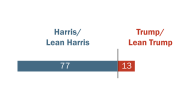I. Overview
Latinos are less likely than whites to access the internet, have a home broadband connection or own a cell phone, according to survey findings from the Pew Hispanic Center, a project of the Pew Research Center. Latinos lag behind blacks in home broadband access but have similar rates of internet and cell phone use.1
While about two-thirds of Latino (65%) and black (66%) adults went online in 2010, more than three-fourths (77%) of white adults did so. In terms of broadband use at home, there is a large gap between Latinos (45%) and whites (65%), and the rate among blacks (52%) is somewhat higher than that of Latinos. Fully 85% of whites owned a cell phone in 2010, compared with 76% of Latinos and 79% of blacks.2

Hispanics, on average, have lower levels of education and earn less than whites. Controlling for these factors, the differences in internet use, home broadband access and cell phone use between Hispanics and whites disappear. In other words, Hispanics and whites who have similar socioeconomic characteristics have similar usage patterns for these technologies.
Hispanics, on average, are also younger than whites. However, even within each age group, Hispanics show lower levels of technology use than do whites.

Survey questions also probed for the use of non-voice applications on cell phones. Respondents were asked specifically about whether they access the internet and whether they use email, texting or instant messaging from a cell phone. The findings reveal a mixed pattern of non-voice cell phone application use across ethnic and racial groups. Hispanics are less likely than whites to use any non-voice applications on a cell phone (58% vs. 64%), and they are also less likely than whites to send or receive text messages (55% vs. 61%). However, Hispanics and whites are equally likely to access the internet and send or receive email from a cell phone. And Hispanics are more likely than whites to engage in instant messaging (34% vs. 20%). Compared with blacks, Hispanics are less likely to access the internet (31% vs. 41%) or send or receive email (27% vs. 33%) from a cell phone, but rates of texting and instant messaging are similar for the two groups.
Though they are no more likely than whites to access the internet from a cell phone, Hispanics are more likely to do so in lieu of a home internet connection. Some 6% of Latinos report that they access the internet from a cell phone but have no internet access at home. This rate is the same for blacks, but notably higher than the rate for whites (1%). While controlling for educational attainment and income erases ethnic differences in internet use, broadband access and cell phone ownership, this is not entirely the case when it comes to the ethnic difference in dependency upon a cell phone for internet access. Controlling for income and education erases the differences for the highly educated and most affluent, but differences still persist for those with no college experience, and those earning less than $50,000 annually.
This report is based on two national surveys. The first, the Pew Hispanic Center’s 2010 National Survey of Latinos is a nationally representative bilingual telephone survey of 1,375 adults ages 18 and older. Interviews were conducted from August 17 through September 19, 2010. The margin of error for the full sample is plus or minus 3.3 percentage points at the 95% confidence level. The second, the Pew Internet and American Life Project’s August 2010 Health Tracking Survey is a national representative telephone survey of 3,001 adults, conducted from August 9 through September 13, 2010. The margin of error for the full sample is plus or minus 2.5 percentage points at the 95% confidence level. For a full description of the methodology of both surveys, see Appendix A.
Other key findings include:
Ethnicity
- Latinos are significantly less likely than whites to have a home internet connection (55% vs. 75%); this difference persists even if the sample is limited to internet users (85% vs. 96%). The likelihood of having a home internet connection among blacks (58%) does not differ from that of Hispanics.
- Among internet users, Hispanics are less likely to have a home broadband connection (69%) than are whites (84%) or blacks (78%).
- Among cell phone owners, Hispanics are as likely as whites or blacks to utilize at least one of the four non-voice cell phone applications—more than three-fourths (77%) of Hispanics do so while 75% of whites and 79% of blacks do the same.
- However, Hispanic cell phone owners are more likely than white cell phone owners to access the internet (40% vs. 34%), email (36% vs. 31%), or instant message (45% vs. 24%) from their cell phone. Meanwhile, Hispanic cell phone owners are less likely than black cell phone owners to access the internet from their cell phone (40% vs. 51%).
Nativity
- Native-born Latinos are more likely than foreign-born Latinos to be online (81% vs. 54%); to have a home internet connection (71% vs. 45%); to have a home broadband connection (60% vs. 35%); and to own a cell phone (86% vs. 70%).
- From 2009 to 2010, cell phone ownership among the native born increased six percentage points (from 80% to 86%). This increase was driven primarily by increased cell phone ownership among Latinos who are the children of immigrants, or the so-called second generation (from 79% to 88%).
- The native born are more likely than the foreign born to use non-voice applications on a cell phone—74% vs. 48%.
Language
- Spanish-dominant Hispanics trail bilingual and English-dominant Hispanics in internet use, home internet access, home broadband access and cell phone ownership.
- Some 47% of Spanish-dominant Latinos use the internet, compared with 74% of bilingual Latinos and 81% of English-dominant Latinos.
- Some 37% of Spanish-dominant Latinos have a home internet connection, compared with 61% of bilingual Latinos and 77% of English-dominant Latinos.
- About one-fourth (26%) of Spanish-dominant Latinos have home broadband access, compared with about half (52%) of bilingual Latinos, and two-thirds (66%) of English-dominant Latinos.
- Some 68% of Spanish-dominant Hispanics have a cell phone, compared with 78% of bilingual Hispanics and 86% of English-dominant Hispanics.
- While the overall internet usage rate among Spanish-dominant Latinos remains low, the share using the internet has increased rapidly—from 36% in 2009 to 47% in 2010.
- More than three-fourths (76%) of English-dominant Latinos use cell phones for something other than traditional calls, while 62% of bilingual Latinos and 44% of Spanish-dominant Latinos report as much.
Age
- Among Latinos, internet use, home internet use, home broadband access, and cell phone ownership are less prevalent at older ages.
- From 2009 to 2010, the share of Latinos ages 18 to 29 who were online jumped from 75% to 85%, and the share with cell phones rose from 81% to 90%.
- The likelihood of using any type of non-voice cell phone application declines with age for Latinos.
Education and Income
- Among Hispanics, higher levels of educational attainment and household income are linked to higher rates of internet use, home internet access, having a home broadband connection, and cell phone ownership.
- The same is true when looking at non-voice cell phone applications—Hispanics with more education and more income are generally more likely to use these mobile applications.
Place of Residence
- Rates of internet use, home internet access and broadband access are similar for Latinos living in urban, suburban and rural areas.
- Cell phone ownership is significantly less prevalent in suburban areas than in urban or rural areas.




